#strong towns
Note
Interested to know what you think of Strong Towns. I know the orange youtuber promotes them heavily, but from what I've seen they look like a good org. For example, here's their video on the town that won this year's Strongest Town bracket:
https://youtu.be/q7T9u53Im9E
Any specific thoughts?
I feel like they take a rather fiscally conservative approach to urbanism which has its place but just isn't how I like it being promoted and done. But they do help to create awareness for urbanism and are a good starting point so I respect them for it
35 notes
·
View notes
Text
America is an unwalkable hellhole
I'm currently shopping around for houses. There's a house that came up on the market recently. It's a little out of budget, but I looked at it anyways. It turned into a great illustration of how incredibly inefficient and unhealthy our unwalkable city design is.
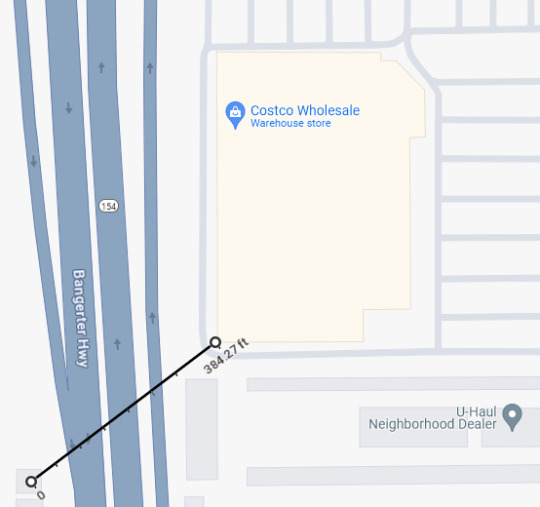
Good news! It's less than 400 feet away from a Costco, which would carry groceries, home goods, and all kinds of useful stuff. Living 400 feet away from a Costco should be a dream, as it should let you knock out a good number of chores with a quick walk across the street.
However, you might notice that it's crossing quite a big road there. Let's do a quick check to see how long the safest walking route is.

Oh look! It's a one-hour walk each direction to go to a store that's four hundred linear feet away.
Well, we're in America. What if we hop in our Freedom Car and drive there like God and the Founding Fathers intended?

Take a look at that! It's a five-minute drive with moderate to low traffic for the area. Five minutes to go 400 feet is just shy of 1mph, so my Freedom Wagon is going about 1/3 the speed of walking directly there while also generating 20x the C02! Great!
BUT WAIT! It gets better!

If the store is busy, I could very realistically end up getting in my car, driving for 5 minutes, spending several minutes hunting for a parking spot, and still have to walk another 680 feet. All to get to a store that's 400 feet away from the house I was looking at.
I so, so desperately want to live in a place where I can just walk to a store, and a library, and the place I work. But we don't have that here.
17 notes
·
View notes
Text

Look what just arrived!
All purchased through Bookshop.org, which... apparently lets any random person do affiliate links? So here, I made one, with all the books I've been buying: Nixy's Recs
(Bookshop.org is an online bookstore that ensures profits are all directed to small, local bookstores instead of behemoths like Amazon or B&N. You can choose a store in your area to shop 'from,' or just allow the profits to go into the a more general fund that gets distributed evenly to all bookshops in the system. This post by @ebookporn and @batmansymbol does a great job explaining how it works.)
Strong Towns and Walkable City are both books I found through the Strong Towns YouTube Channel. I haven't read these yet (they only just arrived yesterday), but if they're at all like the videos, then I have high hopes.
And here are the specific books (again, affiliate links, which I've never done before but here goes):
The Keystone Jacket and Dress Cutter: An 1895 Guide to Women's Tailoring by Chas Hecklinger (Author), Kristina Seleshanko (Preface by)
Walkable City (Tenth Anniversary Edition): How Downtown Can Save America, One Step at a Time by Jeff Speck (Author), Janette Sadik-Khan (Introduction by)
City Planning: A Very Short Introduction by Carl Abbott (Author)
Strong Towns: A Bottom-Up Revolution to Rebuild American Prosperity by Charles L. Marohn (Author)
#books#bookshop.org#walkable city#strong towns#fashion history#drafting#pattern drafting#city planning#phoenix recs#product reviews#kinda
125 notes
·
View notes
Text

Most average life of a north american urbanist (me)
#urbanism#strong towns#urban planning#infrastructure#walkable cities#walkability#urban sprawl#cars suck
49 notes
·
View notes
Video
youtube
You Don’t Have To Move To Live In A Better Place
This video is by Strong Towns, so it’s aimed at people who want to fix infrastructure issues to make their communities nicer to live in. But even if that’s not your thing, it has some great tips about going from “gee, there’s stuff I wish I could change about my community” to “making a lasting positive difference.”
And the critical thing, the absolute thing that makes a difference, is talking to people in person and building relationships. Getting to know the people in the area who might also have feelings about the issue, and spending time with them, so that even if you don’t agree on a lot of stuff, you can still work together on the issues you do agree on. So that you know what the people in your community actually want and need, not just what you think they want or need, or what you think they should want or need.
This really struck home because I just attended a conference that, among other things, had a session about “one to one activism.” One to one activism is where you identify other people who have a stake in the issue you care about, and you go talk to them one on one. But! Crucially! You do not go to try and convince them of anything. You go to get to know them and build a relationship. You go to find out what they need, what their hopes and fears and dreams are. You go there to learn.
“But how is that activism!” you may ask. Actually, it’s the foundation that makes activism possible. Because once people know you and know you care about them and respect them, they are way more willing to listen when you do come to them with ideas and requests. And also, when you do one-to-ones, you learn things about them and about the community you would never have known otherwise. Spend a while doing one-to-ones and building relationships, and all sortsof things become possible. You can get people who you would have thought would never agree with you to join you for a particular action. You may still have a lot of disagreements and differences, but activism isn’t like marriage. You don’t have to work with someone permanently and forever to work together on the few things you actually have in common.
One of the examples they used was a local group that had recently managed to get a very conservative county to INCREASE taxes for the purposes of building low-income housing. (And anybody familiar with US politics should know how astonishing it is that they got a conservative county with a conservative government to increase taxes for any purpose whatsoever.) For the first few years it didn’t look like they were accomplishing much. They just went around talking to people, and getting to know people, and building relationships, and asking people what their hopes and dreams were, and asking if there was anybody else in the community they should be talking to.
All that meant that when they actually came to the point of asking the county commissioners for the tax increase, everybody knew and trusted them. The plan they had took into account the needs and objections of all the local stakeholders. They had locals testifying, and the most effective ones were people they’d had no idea even existed when they started. And, crucially by sitting down with the county commissioners and getting to know them before they made any asks, they found out when one of the hard-liners would be retiring and therefore no longer needed to worry about re-election. And, it turned out, that once he didn’t have to worry about “will my constituents--who think taxes are inherently evil--fail to re-elect me if I raise taxes” he thought that raising a slight tax and using it to reduce the housing and homelessness problem in the county was a good thing. So bringing the question to a vote when he was in his last term before retiring meant they got his vote--and with the furthest-right person on the commission voting in favor, that cut the “but muh taxes!” people off at the knees, and it passed.
So yeah. If you care about your community--if you want to make changes--the most important thing to do is to get out and talk to people and build relationships. Everything starts there.
15 notes
·
View notes
Text
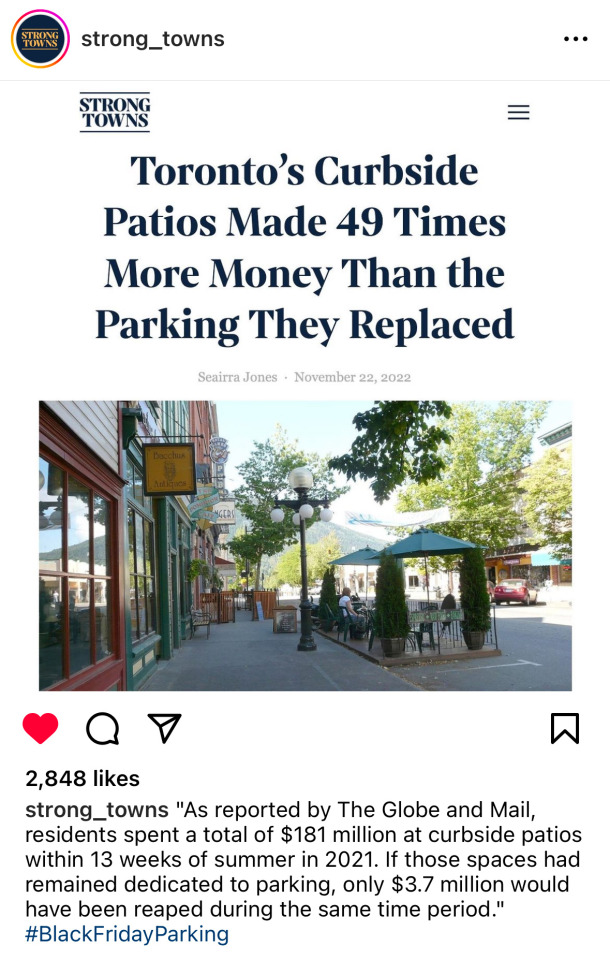
via
16 notes
·
View notes
Text


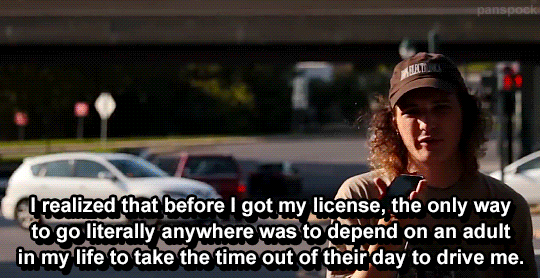
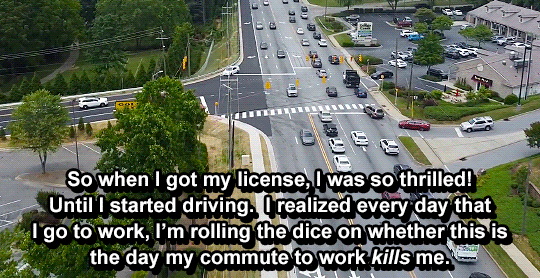
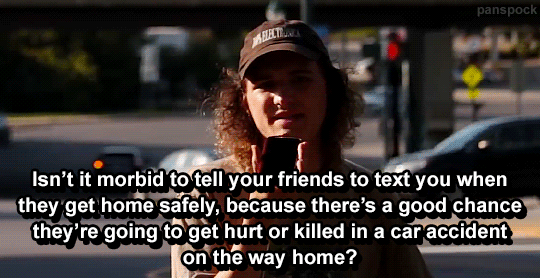

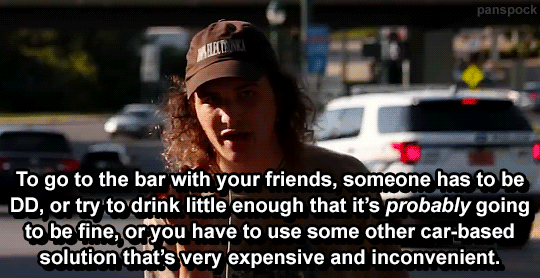
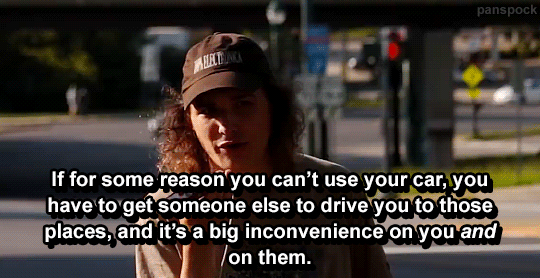


The Worst Places in American Cities Were Intentional
#youtube#urban planning#car dependence#strong towns#fuck cars#(obligatory cars are useful but car dependence sucks that's just the most common tag so i'm using it!)#rob robinson#gif cw
13 notes
·
View notes
Text
Our cities need social infrastructure also
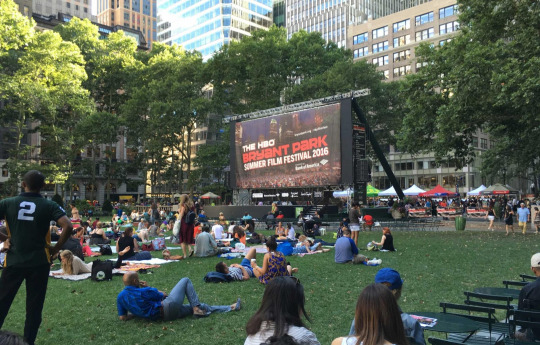
People don’t live by water pipes, sewers, street lights, and thoroughfares alone. Social infrastructure is what transforms cities from collections of buildings and roads to communities worth caring about.
Read more.
#urbanism#strong towns#infrastructure#society#social#communities#people#texas#nyc#embedded#attractive#agile#investments#social infrastructure#new urbanism
27 notes
·
View notes
Text
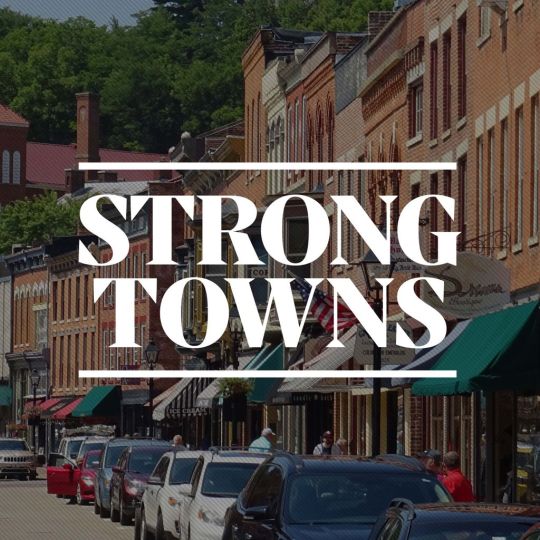
3 notes
·
View notes
Text
I know I've beaten this drum before, but here we go again: "everybody move to the city" is not the solution to car-culture and urban-design problems. In fact, I think it's part of the problem. Allow me to explain.
tl;dr it's all about the votes
First, let's figure out what "the city" means. Most large cities consist of two parts: a very dense core, and outlying areas which are practically the same as suburbs. Still vast tracts of single-family detached homes, sliced apart by "stroads" that isolate more than they connect. (For those who don't know the term, it's a portmanteau of "street" which is a place of commerce and "road" which is a way to get from one city/town to another. Stroads combine the worst of both, separating what's on either side with high-speed traffic.) A classic example is Detroit, which is one of the largest US cities geographically. The stroad near us when we lived in Detroit was actually worse than the one near us in an adjoining suburb (Hazel Park), in both we were surrounded by other SFD homes, in both we had major highways nearby, a dearth of stores, and so on.
So, "move to the city" can mean one of two different things: moving to the core, or to the outer areas. If you move from the suburbs to an outer area, that's what we in computing call a "no-op" - an instruction that does nothing. Neither the place you left nor the place you went to has or will change, except for a few exceptions I'll get to later. Most importantly, nothing has changed for you. You're still living in basically the same environment (except maybe a bit dirtier and with fewer trees). On the other hand, if you move to the core - the only version of "move to the city" that really means anything at all - you might have well improved conditions for yourself, at the expense of making that core even less affordable. You will also have added to the infrastructure challenges there. "New urbanists" like to talk about the infrastructure costs of sprawly suburbs, but for electrical power in particular there are equal challenges for dense urban cores. The optimal distribution is actually somewhere in between. This effect is somewhat attenuated for other kinds of infrastructure such as fresh water, food distribution, and waste disposal, but we still have to ask: how many more upstate New York communities have to host New York City's trash? And where do all those garbage trucks go at night? Hint: it's not near the people whose trash they're hauling. Another "externality" imposed on adjacent communities so that the core residents can forget about it.
If everyone tried to move from the suburbs to denser urban cores at once, it would be a disaster even for the cities themselves for all the reasons above, but there are other problems as well. What would happen to all of the abandoned buildings and infrastructure back in the suburbs? To get an idea, take a tour of the "Rust Belt" some time. That will show you quite clearly the human and ecological toll of emigration on such a scale. What a waste. With disasters at both ends, how is that a solution?
This is where we get to the other ill effect of people moving to the city. Everyone who leaves from a suburb to a city is leaving their vote behind. That leaves even fewer voters to do anything about zoning and other policies that make suburbs the way they are. I've seen it over and over; the people who care about creating walkable neighborhoods and reducing car dependence leave, so policy remains in the hands of people who want to keep things the same. That is, quite directly, why most suburbs have town centers that are sterile and useless - if they even exist. Too many suburbs don't even have a real center, just one or more extended strip malls.
What we need is not more 15-minute cities but more 15-minute towns. Thousands of them. Reconfiguring and repurposing existing structures, where people already live and will continue to live, instead of abandoning them and building even more in the cities. Mixed use, mixed income, medium density. The missing middle according to some. To achieve that goal, people need to stay and vote (or, even better, serve on town zoning boards and such). The day when the cities could absorb the nearer suburbs - as Detroit did once, to become so big - are gone. No suburb would submit to such incorporation in the current milieu of property values and school funding and so on. The weight of numbers from city dwellers can't be used to force change anywhere else at anything less than the state level. How well does that work? Again, Detroit - ringed by more prosperous suburbs - tells us the answer: not at all. Detroit has no influence over poor suburbs like Hazel Park or River Rouge, let alone rich ones like Birmingham or Bloomfield Hills.
Every town (or small city) that has succeeded in reversing the process of suburban sprawl, in creating walkable and pleasant but still affordable and ecologically sustainable neighborhoods, has done so through the efforts of residents who stayed and did the work. "Move to the city" is a religion among the privileged few (who must be few for it to work at all), not a solution for the many. As long as it's the mantra among self-styled "new urbanists" we will all get exactly nowhere. Let go of that idea. Embrace strong towns instead.
2 notes
·
View notes
Text
youtube
If you want to get involved locally, but don’t really know anything about urban planning, I’d highly recommend the above 13-minute video as a quick intro.
Strong Towns, Climate Town, and Not Just Bikes, are getting to be three of my favorite channels, specifically because they don’t just focus on how things are bad, but on how we can start the work on fixing things. And, they all show that it doesn’t have to be a zero sum game.
#strong towns#climate town#not just bikes#things to watch#politics#engaged democracy#recommendations
4 notes
·
View notes
Text
I should really be more active over here…

What sort of post/ blogs do y’all like? (Especially related to tags)
#activism#veganism#society#urbanism#strong towns#secularism#atheism#fuck cars#lgbtqia#lgbt#art#neurodiversity#ableism#school trauma#anarchy#climate crisis
2 notes
·
View notes
Text
"Canadian city planning isn't that bad!" Canadian city planning:
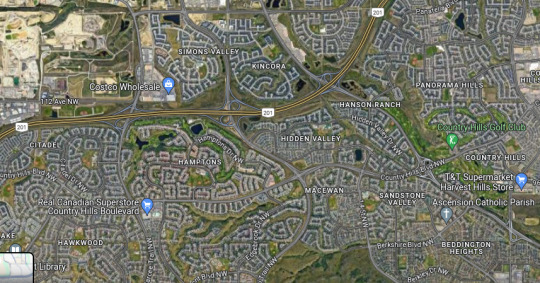

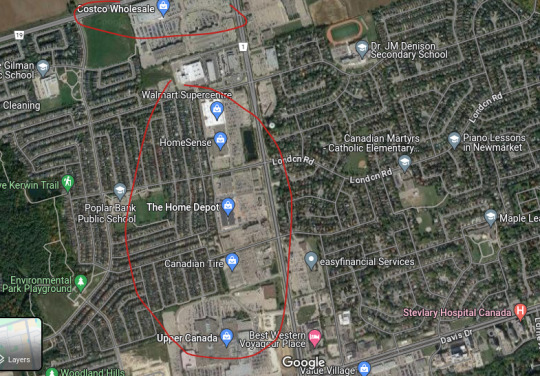

^ that is the worst spaghetti highway i've seen in all of the months i've been invested in city planning. why is my country like this
#city planning#canadian politics#urbanism news#strong towns#walkable cities#urban planning#fuck cars#public transit#suburbiacore
3 notes
·
View notes
Text
4 notes
·
View notes
Text
youtube
Strong Towns looks at how the highway-industrial complex conspires to devalue homes in order to plow unneeded high-speed roads through poor and minority neighborhoods.
5 notes
·
View notes